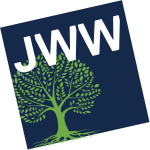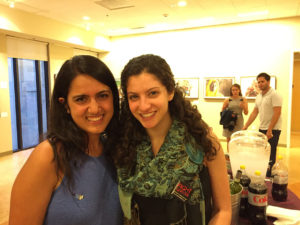Growing up with a lot of theater and music, I always believed in the power of art and the stories it tells to connect human beings. This April with Jewish World Watch and the Dortort Center for the Arts at Hillel, I put up an exhibition of photographs by JWW staff on service trips to the Congo and Chad. The suffering and resilience in the eyes of the Congolese and Sudanese people in the photographs remind me why I work with Jewish World Watch and participate in the Walk to End Genocide. From my position of privilege in the world, I have a responsibility to do what I can to speak up and fight to end these crimes against humanity. We call them that for a good reason. The daily raping, pillaging, and killing in these conflict areas may be far from us geographically, but as fellow women, children, and men, they are our neighbors.

We hosted an opening reception of the exhibition to bring viewers to the photographs and created an enriching program. The Daily Bruin covered the event and emphasized the fact that Janice Kamenir-Reznik is a two-time UCLA graduate and a photographer of many of the photographs. To further leverage the impact of art and storytelling in forging emotional connections to people in conflict areas, I coordinated two acappella groups and multiple speakers. Rabbi Chaim Seidler-Feller gave us a beautiful teaching about Jewish history and how constructive memory sparks action toward other “strangers,” since the Jewish people have long been “strangers in a strange land.” Morris Sarafian from the Armenian Students Association told us his great-grandfather’s horrific survival story from the Armenian Genocide, why his community seeks recognition of these crimes, and how important it is to speak up in the face of genocide and mass atrocities. Anne Roberts from JWW moved us with heartbreaking, inspiring, and hopeful stories from her visit to the Congo. Rachel Fidler introduced the work of Righteous Conversations Righteous Action, which brings together Holocaust survivors and students to create media for social justice. The video we showed brought my whole JWW experience full circle, because I had made it with RCRA after hearing about the work of JWW on that program.

Naama Haviv, the previous Assistant Director, had shared with us the work of JWW, the power of storytelling, and specific stories she’d encountered in her work. It was so inspiring that we decided to create a PSA about the power of the individual in collective action. The PSA, called “Walk with Me,” encouraged people to join in the Walk to End Genocide. After the video, I spoke about my experience with JWW and the impact each person in attendance could have: “By adding your name and support for the Walk, you not only support families in these conflict areas, but you show our political leaders that this is an issue they cannot sit out on either.” While I wish the event had gathered more walkers and supporters, I was happy with how much positive feedback I got from people who attended, and even from those who heard about it from friends in attendance. We raised money for the Walk by selling challot that students at Challah for Hunger baked just before the event. The past two quarters, I have been especially grateful for the JWW partnership with Challah for Hunger. Their challah baking sessions have also been opportunities for me to teach student groups about mass atrocities, genocide, and how JWW helps with various projects.
Though the political climate at UCLA can keep student groups apart when they should be working together, Jewish World Watch rallies for a cause that they can all support. It has been an honor to work for this organization and learn from its staff, as well as other fellows. As I leave UCLA, I hope that Jewish students continue to see global justice work as an integral part of their Jewish identities, and that causes like ending genocide and mass atrocities can bring diverse students together to make the world a better place.



